Catenary and Ground Level (Non-Viaduct) Track
Kato has two kinds of base for catenary poles, one for use on elevated structures and one for use on flat track. Both are available in narrow and wide versions. There is actually a third kind of elevated catenary base, made for use with single-track viaduct (it comes in the 23-056 Catenary Pole Base set, along with the flat narrow bases shown below). As I am not using any single-track viaduct (except on the subway river crossing, where I won’t need poles on the viaduct track itself) I’m not discussing those here.With the older, narrow, spacing, the bases are actually half bases that can be used alone with single track, or joined together for double-track. The newer ones are only for double track (or two parallel single tracks).
One of the nice features of the non-viaduct base is that it holds parallel tracks apart at exactly the standard Kato spacing for parallel tracks, 33 mm. It does this by snapping onto pins on the underside of the track. These pins are also present on double-track.
When using catenary with viaducts there are additional issues, discussed on the Viaduct Catenary page.
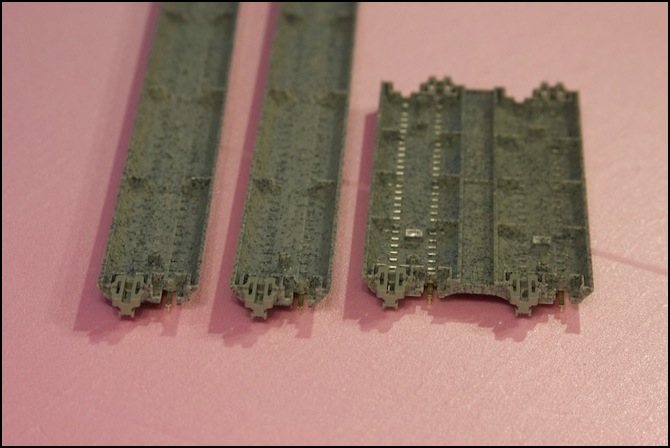
The pins can be seen near the end of each piece of track.
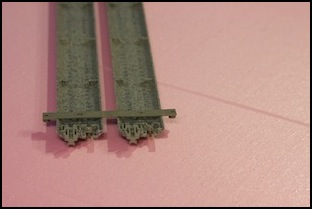
Two parallel tracks with a narrow base connected to them. The base snaps firmly onto the pins, holding the track.
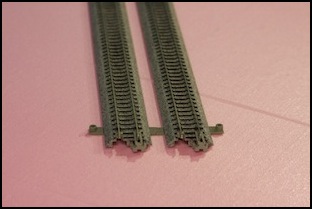
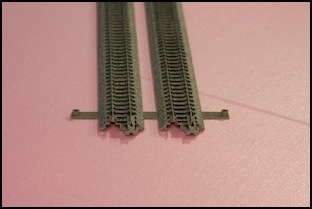
Double-track poles bases in narrow and wide forms.
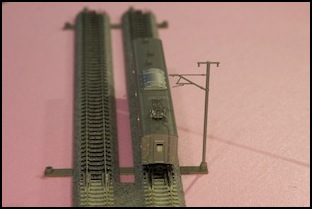
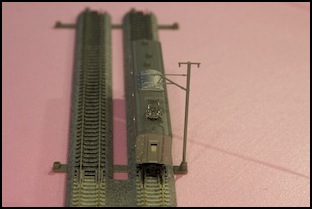
Single pole showing how it doesn’t center above track when used with the wide base, but does with the narrow base.
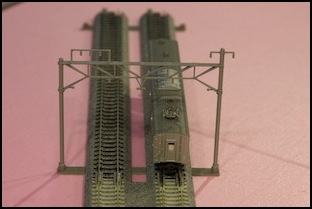
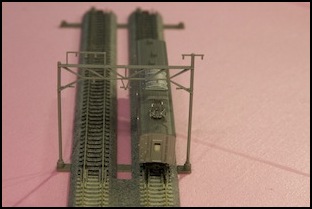
Narrow and Wide bases with matching poles (note insulator centered over left track)
The problem with the standard pole bases is that they don’t work very well if you have multiple tracks. In the photo below, note how the poles of one set of track need to be offset from those on the other. This is hard to do on a curve, and requires placing some of them where there aren’t pins on the track.
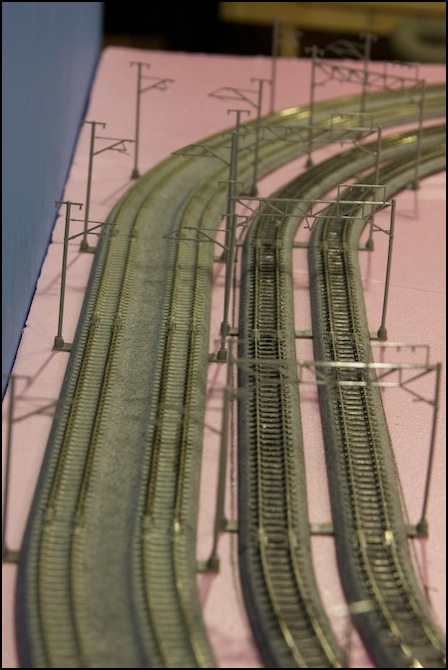
On the other hand, it can be done (at least with narrow bases, the wide bases are a bit of a problem, as they get in the way of the next track over), and the end result is worth it. The picture below is a bit “busy”, but it looks more “real” than bare track alone would. One particular advantage is that the two styles of pole help to distinguish the two sets of double track as different lines that just happen to be parallel, which is very prototypical.
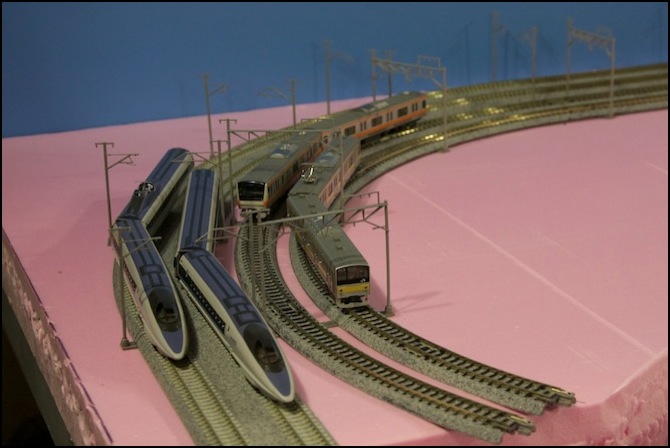
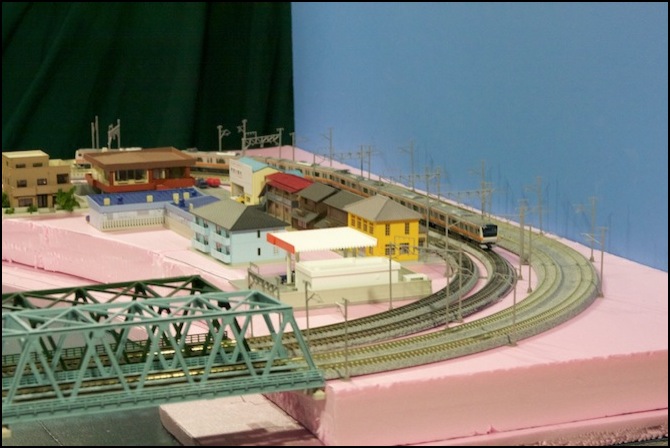
In the end, I’m left with a bit of a problem: I can use narrow bases if the tracks are going to be parallel, but not the wide ones. This may pose problems for future tilting trains or longer Shinkansen. I also ran into a problem, not shown here, if the inner tracks are ground level and the outer tracks are on viaduct, as even narrow poles on the lower ones won’t fit beside the viaduct (which is problematic for my original design which used viaduct on only one of the two sets of tracks).
This leaves me thinking that I either need to take a bit of a risk with the Shinkansen line, or I need to build my own poles, at least for this curved section where they are parallel. Yet more food for thought.




